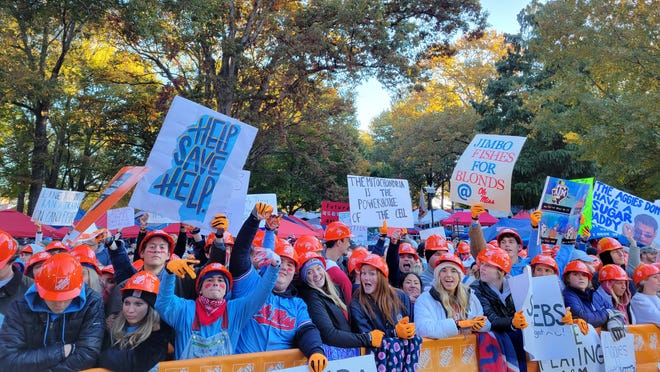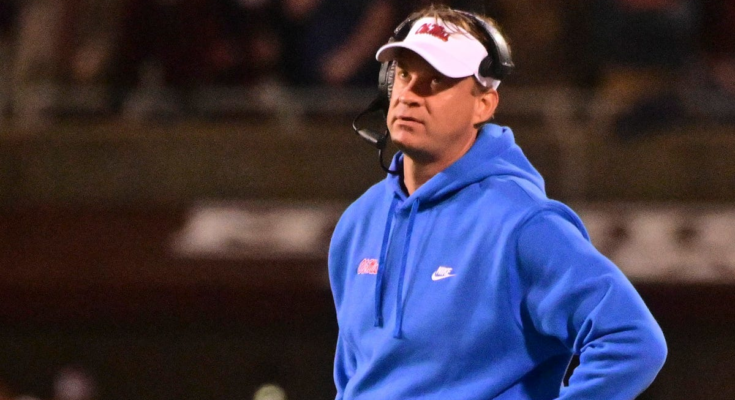
OXFORD — Lane Kiffin is done ignoring what the transfer portal has done to college football recruiting.
“I don’t think people really say it this way, but let’s not make a mistake: We have free agency in college football,” Kiffin said. “The kids a lot of times go to where they’re going to get paid the most. No one else is saying that, maybe. But the kids say ‘This is what I’m getting here from NIL.'”
Over the last three years, there have been three major changes to college football that have created the mess that is modern recruiting.
WHO’S NEXT?:9 potential candidates for Lane Kiffin, Ole Miss’ next offensive coordinator
UNIMAGINABLE:How faith, confidence fueled Ole Miss LB Mark Robinson’s complicated football journey
The transfer portal was established in 2018, allowing players to declare a transfer and begin communicating with prospective coaches while still on campus at their previous school. This year, the NCAA passed legislation that allows players to transfer penalty-free one time in their college careers, removing the obstacle of ineligibility from transfer choices. And also as of this year, players can now be paid for their names, images and likenesses, allowing third-party money to legally influence players’ choices as to where they want to play.
Combine those three changes and there’s a lot of good for players. It’s good players can make money off advertising and self-promotion. It’s good players can transfer freely if they believe there are better opportunities to be had elsewhere. It’s good there’s a regulated place coaches and players can legally communicate in the transfer market without risk of violating compliance rules.
You also create a bit of a disaster when it comes to roster management.
“Right now you’re practicing for bowl games,” Kiffin said. “We had a player not here (Monday) because he’s still on his official visit to another place. Just really think about that. It’s very strange. I had a recruiting weekend this weekend where I had to fly out really quick to go see someone that’s at another school but is in the portal.”
Kiffin goes back to the free agency metaphor, but adds one important caveat. In NFL free agency, players sign a contract to play for the franchise of their choice. The NCAA still has no contract for transfers. Transfers don’t sign a National Letter of Intent like incoming freshmen do.
And, perhaps more crucially, teams aren’t contractually obligated to keep their recruiting promises to players.
“At least in the NFL there’s free agent contracts so they know what it is and they have to sign it, versus places saying, ‘Hey, when you come here you’re going to get this much money,’ and then when they get there, do they really get it?” Kiffin said. “It’s a new world.”
Kiffin said he and his staff try to stay out of conversations about what Ole Miss can offer from a name, image and likeness payment perspective. He said he can answer questions about how much current players earned this year and what opportunities are available, but he can’t direct any payment or any connection with potential financiers.
Let’s not pretend every transfer is only in it for the paycheck, though. There are plenty of players in the transfer portal because the coach who recruited them was fired or left for another job. Or because they were surpassed on the depth chart and want an opportunity to contribute elsewhere. Or because they want to move closer to home. Or play in a different kind of scheme or at a different position.
All of these reasons are valid. The problem is there’s no restriction on when transfers can happen. There are windows for high school and junior college players to sign with Division I teams in December and February. There are no such windows for the transfer portal.
Players can enter the portal any time they want and can join their new school within or outside the December and February signing periods. This creates situations like happened at Ole Miss this offseason where Utah transfer Orlando Umana entered the transfer portal in late June, committed to Ole Miss in July, got on campus in August and started at center from Day 1.
That kind of flexibility is great for transfer players. It’s terrible for teams and high schoolers. If you always need to save available scholarships in case you can add a game-ready veteran, you’re going to give out fewer and fewer scholarships to players who would usually be on the low end of your recruiting classes.
“Getting out on the road, there’s a lot of frustration with junior college coaches and high school coaches because they feel like kids that were in the bottom level of getting offers and going places at the bottom of classes now aren’t,” Kiffin said. “People are using them up on transfers. So now we’ve got high school kids with nowhere to go when they had places.”
Ole Miss only has 14 players committed for the Class of 2022 with just a day remaining before the early signing period begins. Last December, Ole Miss signed 23 players. And that came in a year where the Rebels couldn’t host visitors because of COVID-19 and had to recruit around those restrictions.
The transfer portal isn’t the only reason for this. Ole Miss had 20 seniors in 2021 who are eligible to return for a fifth season if they want because the NCAA afforded all players an extra year of eligibility after the rash of opt-outs in 2020 because of COVID-19. Combine that with the abnormally large class of 31 players the Rebels signed in 2019 and you have a team low on scholarships.
Unless, of course, more Ole Miss players start putting their names in the portal. A few Rebels have done so already, most notably senior linebacker MoMo Sanogo and sophomore tight end Damarcus Thomas.
But entering the portal is a risk if you’re leaving because you’ve been passed over on the depth chart. Kiffin estimates there are “thousands” of kids in the portal without a home who voluntary gave up scholarships for the promise of a fresh start that never came.
“There are just a lot of things happening from what was initially a really good idea to help the kids,” Kiffin said.
Contact Nick Suss at 601-408-2674 or [email protected]. Follow @nicksuss on Twitter.


